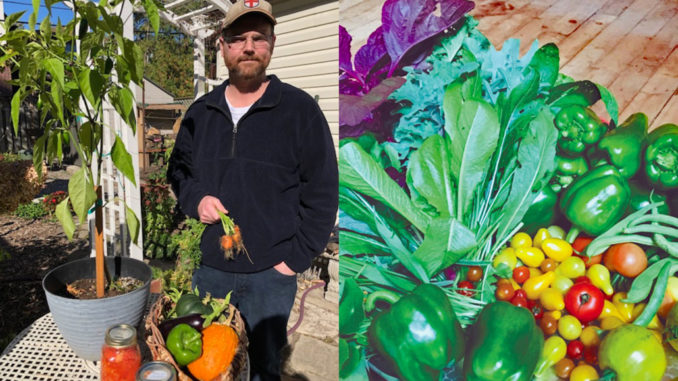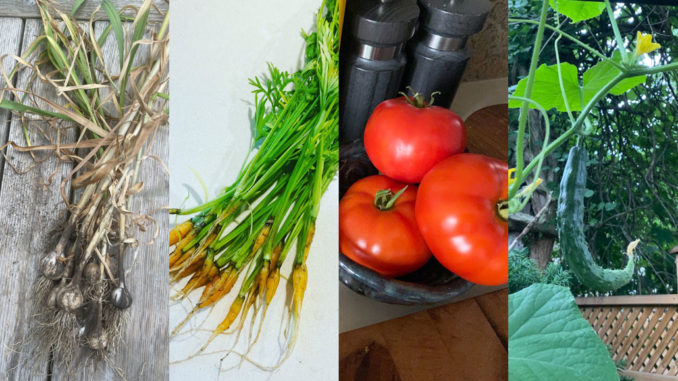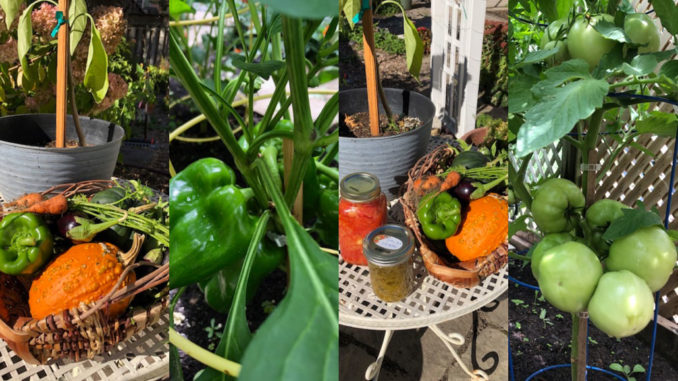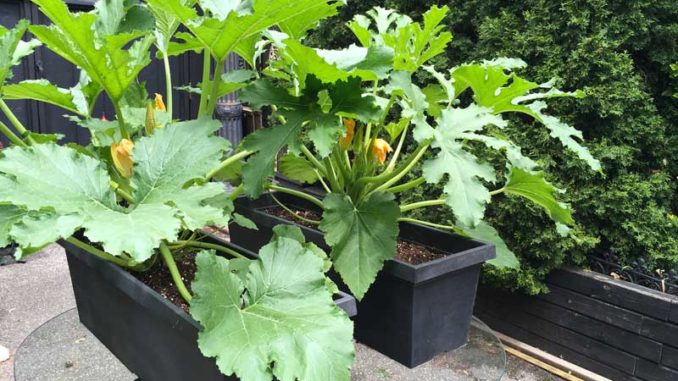
It’s suddenly November, that time when every Leaside gardener slows down, as nature does, preparing for a well-deserved rest. And it’s also the time when any gardener worth their salt looks over their garden journal to reflect and learn from the past growing season to hopefully make things better for the next.
This month, in part 2 of the Leaside harvest report, we will see how some of our backyard gardeners battled through the unprecedented growing season of 2020. With a pandemic, a lockdown, supply shortages, a polar vortex, extreme heat, drought, damaging winds and a variety of both familiar and unfamiliar pests. How did they manage?
A quote from Carla Rose of Davenport Garden Centre summed up the growing season perfectly for me when she said “At the beginning of April, we were fighting for sheer survival – and then we were fighting to keep up with the unprecedented demand. But it ended up being our best season ever, even though we were only operating out of a single location.”
Though Carla was speaking from a garden supplier’s perspective, I think every gardener, felt that overwhelming fear at the beginning of the season. But those who dug in with the same hopeful determination (and a lot of hard work) received some unexpected rewards.
The Holly Reid harvest:

It was back in February when Holly told me about her plan to install new raised garden beds to accommodate her love of vegetable growing. I mentioned this in my May article “Will you be planting a Victory Garden in 2020?” And then again in June with “Grow your own food? You can do it!”
I followed Holly’s ambitious project from the very beginning when the wood was delivered in early March, the soil in late March and through the first week of May, when she planted the early crops with seeds saved from the previous year.
When it finally warmed up in June, our local garden centres were allowed to open with social distancing protocol in place. So Holly got on her bike and picked up seedlings of pole beans, Swiss chard, zucchini tomatoes and peppers along with a variety of herbs, nasturtiums and morning glory.
I was hopeful when I checked back in September and naturally disappointed when she said “I’d love to say that I had a massive harvest but not so much. Lettuce and spinach were harvested early when the hot weather arrived. But during the summer heat and drought, many of my plants seemed to just stop – no growth but no flowering either.”
I received the similar reports from many of my Leaside planting buddies, including her comments about skinny carrots and tiny garlic bulbs. Holly suspects this was a fertility problem with her soil, while Michelle Delaney (lead gardener of the Thorncliffe Park Urban Farmers) wonders if this was more of an issue with water reaching deep down to the roots. There’s a good chance they’re both right.
Yet I was most fascinated by Holly’s success with cucumbers that she had planted in a cast iron pot and placed in the shade. “I got 4 very nice cucumbers and have never succeeded with cucumbers before!”
Like all good gardeners, Holly takes notes and is now making changes to her garden. Learning from both success and failure, she has already amended her soil to be ready for next spring and will order seeds early in February to start them indoors.
The Tim Davies harvest:

Back in September, when I interviewed Kathi Davies (the lead gardener of St. Cuthbert’s community garden) she told me all about her son Tim, who was a chef at a high-end hotel chain and recently found himself furloughed.
Being a chef, with time on his hands, Tim knew exactly what he wanted to grow for his culinary needs and quickly turned his parent’s backyard into his own personal dream farm.
Born with a green thumb, he planted only from seed and said “Not everything survived from seed to garden, so I got what grew.” Which were tomatoes (both beefsteak and cherry) bush, pole and scarlet beans, 4 varieties of peppers, cucumbers, eggplant, zucchini, acorn squash, Swiss chard, pumpkin, water melon, Cucamelon and filled every available space with easy growing lettuce and radishes.
For Tim, the heat and drought were by far his biggest issues but there were also unknown animals eating his crops, insect destruction, along with nutrient deficiencies and the infamous 2020 bounty of hard green tomatoes!
What I found most inspiring was how Tim embraced the true meaning of Victory Gardens by preserving so much of his harvest. He canned, pickled and preserved everything that he could – including those green tomatoes, which became salsa.

As for me, my harvest report is not about my bumper crop of French filet bush beans (thank goodness I saved seeds) or the amazing bonsai experiment I did on the enormous zucchini plant (thanks to my sister in-law who gave me two seedlings) or how I managed to outsmart destructive critters, by raising my planters on glass top pedestal tables. My report is about how much I learned from my fellow gardeners who shared their 2020 gardening experiences with me. Here are just a few of the many things I learned.
Experiment
If you have enough space and the right conditions, plant a wide variety of crops like Holly and Tim did. Not everything will do well but you will increase your chances of success and learn a lot in the process. Even if you have ample room to plant in-ground, consider using a few containers as well. Remember that Holly’s cucumber success was in a planter.
If you have limited space or lack sufficient sunlight, stick to container growing. This is by far the best way to focus on a plant’s needs and they can be move around when needed or even raise up (away from critter reach) as I now do.
Practice resourcefulness
Save seeds for yourself and to share with others. Every gardener that did this, found themselves a step ahead this spring.
Collect rainwater: It’s free and simply the best water for your plants. My barrel ran empty many times this year, so I plan to add another next year.
Make your own compost: This is the best way to add essential nutrients to your garden soil and again, it’s free!
Preserve your bounty: I was blown away by how much Tim was able to preserve by canning and pickling. Now I’m gathering recipes for next year which includes zucchini pickles and green tomato marmalade.
Increase your harvest by sharing it: If you don’t have the right conditions to grow a wide variety of crops, consider reaching out to a planting buddy or two. I have friends who grow better tomatoes and peppers than I can, while I grow great beans and now zucchini. By concentrating our efforts on only a few crops and sharing them, we all used less resources, decreased our workload, and increased our bounty.
Expect the unexpected
COVID-19 was only one piece of the complicated 2020 growing season puzzle. Climate change brought us extreme weather, fewer pollinators and some unfamiliar garden pests. Now gardeners need to be more alert and more prepared than ever before.
So now that it’s November, take some time to reflect on the growing season that was, make some notes, plan on changes for next year and remember how 2020 was a growing season like no other, lest we forget.
In addition: Tim Davies now has launched his Leaside small business bringing the sous vide world to your kitchen. Find him online at: precisiongourmet.ca.


